Fig. 1 - Ref. 2488G on the wrist. Strap by Attila Aszodi.
Background
Patek Philippe produced the ref. 2488 from approximately 1950 to 1959. Scholarship suggests a total production of roughly 500 left the manufacture. Of this production, the vast majority were produced in yellow gold. Patek also produced examples in white, rose gold and platinum. Among the metals, platinum is very rare with only nine examples known and white gold is the most rare with just five examples known in market as of this writing. I haven’t come across much content on this reference in one location, so am hopeful this brief journey hitting some highlights of the ref. 2488 is of interest.
During the ‘50’s, rectangular and square shaped watches comprised a large production volume for Patek. A period advertisement in Fig. 2, showcased the 2488 reference in print. The ref. 2488 was also shown in a period Patek catalogue and listed at a retail price of $525 in yellow gold in 1953 (Fig. 3 ).
The size of the ref. 2488 is in a sweet spot for most wrists, measuring 33 x 35mm with a 20mm lug width and thus it has very nice presence on the wrist without feeling overpowering, as it sports a timeless size. Below we’ll dive deeper into more details of this reference in general and subject example’s components in particular to understand what to look for and appreciate.
Figs. 2, 3 - Period print advertisement and color catalogue images for ref. 2488 courtesy of John Reardon as shown in his “Patek Philippe in America” publication.
The Dial
The subject of this writing was manufactured in 1957, toward the latter production run for the reference. The silvered dial features a bold, engraved enameled signature and sub-seconds hash marked track. The baton hands are white gold, as are the alternating stick and lapped indices at the 3, 9 and 12 o’clock positions. The dial appears to be untouched in original condition with a slight crème tone, especially when viewed against a white background in most light conditions (Figs. 1, 4-6). This layout was the usual type offered in this reference.
There were some unique variations of other dial and dial/case designs that were also made during this period. Interestingly, a few examples are known with black dials as shown in Figs. 7, 8. A rose on rose Freccero double-signed example also appeared at auction in the past (Fig. 9). The few platinum examples known have dials with either alternating square and baguette diamond hour markers (Fig. 10) or a stick and lapped indices hour marker layout similar to subject example. Finally an example of a Breguet double-signed dial is shown in Fig. 11.
Figs. 4 - 6 - Dial highlights featuring full, bold engraved enamel in proper relief as shown under artificial and ambient light conditions.
Figs. 7, 8 - Rare black dial examples with gold print signature in yellow and rose gold respectively. The 2488J example is one of at least two known with black dial. The 2488R example is the only one I have been able to discover with a black dial. Both examples circa 1954. Images courtesy of John Nagayama.
Fig. 9 - 2488R. Rose with rose Freccero double-signed dial circa 1955. Appeared with original papers at Antiquorum auctions in 2001 and sold for $5,750 in 2002. From appearances someone got quite a deal and if all correct, this example would fetch a much higher result today! Image courtesy of Antiquorum.
Fig. 10 - Ref. 2448P with diamond set dial circa 1954. One of nine platinum examples known, five with diamond dials. Auctioned in Geneva, Nov. 2018 by Christie’s for CHF 35,000. Image courtesy of Christie’s.
Fig. 11 - 2488J with patina from oxidization on case and restored champagne tone Breguet numeral, double-signed Black, Starr & Gorham dial circa 1956. Auctioned at Monaco Legends for €10,400 in 2019. Interesting side note, many of the Breguet dial Patek were destined for the US market as was this example noted by the HOX import stamp on movement.
The Case
A unique Wenger creation, square snap back design is executed with rounded and sloped corners that reflect light depending on the position and show a crease optic on the edges at certain angles (Figs. 15, 16, 23). The case appears as originally finished without signs of polishing in the past. The case design isn’t very sympathetic to interventions and the absence of a subtle crease on the lug sides near the crystal point is one way to spot past work, as it would be easily softened or lost completely during a polish. The case bottom has corresponding creases that align with those on the top and when viewed from the side, helps to assess the crispness of the upper crease that should be present in well preserved examples (Fig. 18). The sides feature a downward taper that adds an elegant look contrasting with the Bauhaus dial design. The vertical case sides present with a horizontal satin brushed finish and a deep, crisp and prominent hallmark is noted on the crown side. By this time of production (around mid-’50’s), one hallmark was the norm for gold cases as opposed to two.
Inside the clean case back there is an absence of past service marks. As a casemaker, Wenger is known for cross referencing the upper and lower portions of the case for various references produced. The inside of the upper case features a stamped “15” which corresponds to the last two digits of the case serial number stamped inside of the case back (Figs. 14, 19). The backside of the case features three artistically engraved initials “J. H. G” in deco block (Fig.17). The manual winding crown is compact and features the Calatrava cross, which is correct and began appearing as of the mid-‘50’s on some models. Finally, the crystal is faceted around the borders and has a profile that sits above the case as shown in Fig. 20.
Figs. 12, 13 - Case side features showing crisp hallmark and angled, rounded case edges.
Fig. 14 - Stamping shown inside upper case with last two serial numbers matching to lower case.
Figs. 15 - 17 - Side and back views of case featuring intricate geometric design and engraved initials. Note the crease on lug by arrow in Fig. 15. Images courtesy of John Nagayama.
Fig. 18 - Alignment of creases should appear even and crisp between case back and lug tops when viewed from the side.
Fig. 19 - inner case back showing Wenger key 1 stamping, reference and serial number markings.
Fig. 20 - Note the crystal profile with facets on the sides and rounded, lapidated corners of the case that create light reflection and dimension.
The Movement
The ref. 2488 is powered by the venerable caliber 10-200, featuring a gyromax balance (Fig. 21). This workhorse caliber is double stamped with the Geneva seal and was also used for other manually wound references such as the Ponti Gennari cased 2424. It features hand finished perlage on the base plate and anglage with Geneva waves on the bridges with black polish also evident. The movement is preserved in immaculate condition for the age, as evidenced by the lack of tool marks on bridges, oxidation on plates or disturbed screw head slots.
Fig. 21 - Caliber 10-200 movement with double Geneva seal stampings and excellent preservation. Image courtesy of John Nagayama.
Closing Thoughts
The Patek Philippe reference 2488 production spanned the ‘50’s decade, yet had quite low numbers manufactured over four types of precious metals. This particular example is preserved in exceptional, original condition and makes a nice addition to a collection as a formed square reference.
I look for signs of coherence between case, dial and movement when evaluating vintage watches. Subject example demonstrates a high quality and consistency of these components. The white gold case execution adds to the allure, since during this time in Patek Philippe manufacture, references in white gold were in very low production and even finding them today in honest and strong condition can be extremely difficult. Therefore, this 2488G has the elusive combination of rarity in numbers originally produced, known examples in market today and well-preserved condition that sets it apart. A nice accoutrement is the period white gold Wenger tang buckle that completes the appearance of this sharp example (Fig. 22). Overall, the ref. 2488G with it’s angled, tapered case and slim profile rocks a unique and discreet style that whispers on the wrist.
I personally believe the recent and renewed interest in unique case designs will continue as more collectors explore the variety of diverse vintage examples produced over time in search of individualizing their collection. Such examples haven’t always received the same attention as references with broader awareness and greater production numbers. Surfacing and curating a bit of background information is a motivation for shining some light on this reference in general and on a top condition example in particular. Heck, variety of some form or fashion is cool and as Huey Lewis & The News famously proclaimed in their hit single… “It’s Hip To Be Square!”
Fig. 22 - White gold period tang buckle by Wenger featuring PP. Co and AW stampings.
Fig. 23 - Angled profile of ref. 2488G.
Thanks for reading.
@aircooltime on Instagram
Acknowledgements
A special thanks to John Nagayama of Onbehalf.jp (@johnbehalf on Instagram) and John Reardon (@johnreardon570 and @collectabilityllc on Instagram) for their permissions regarding image use and assistance to verify production figures.




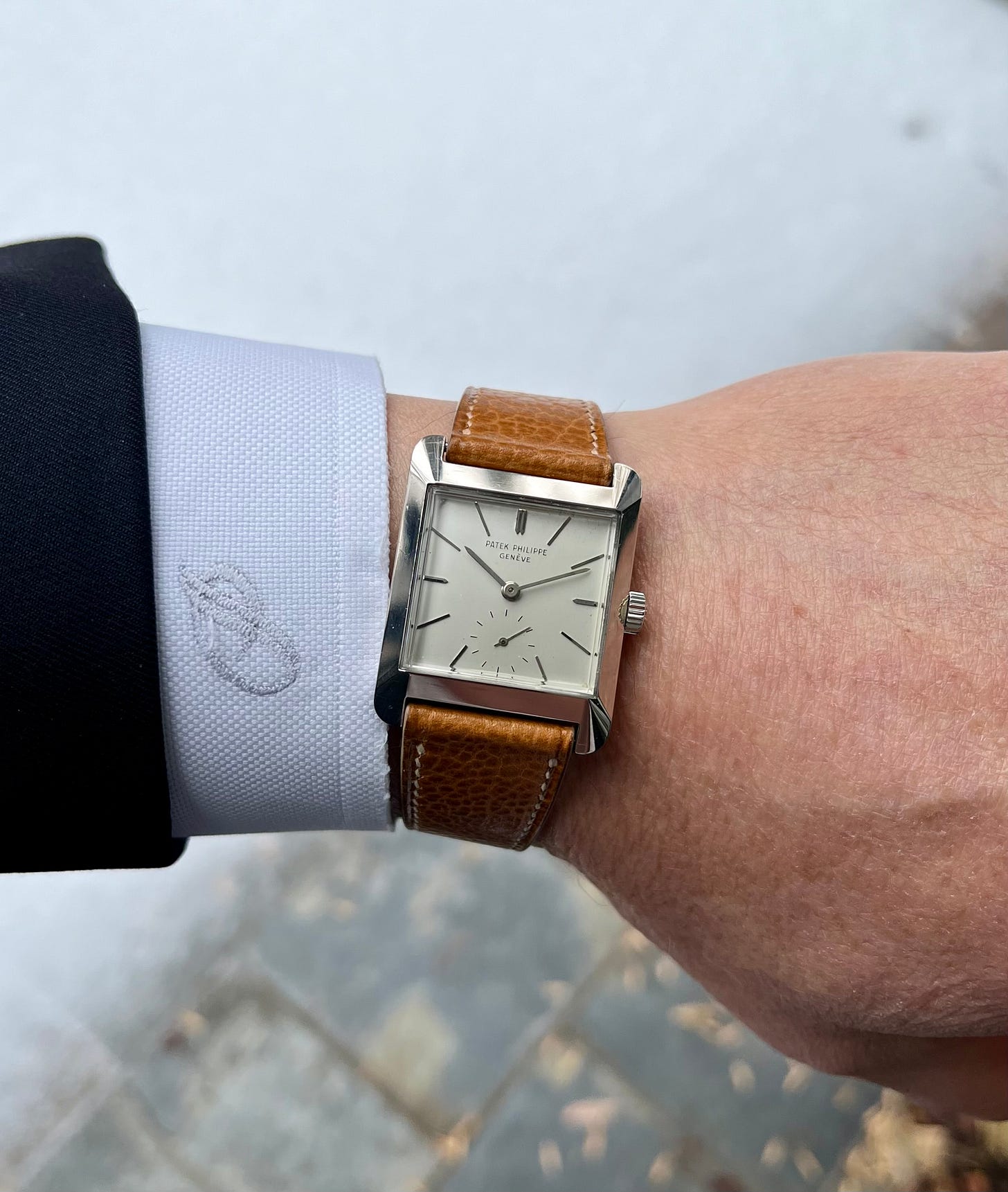
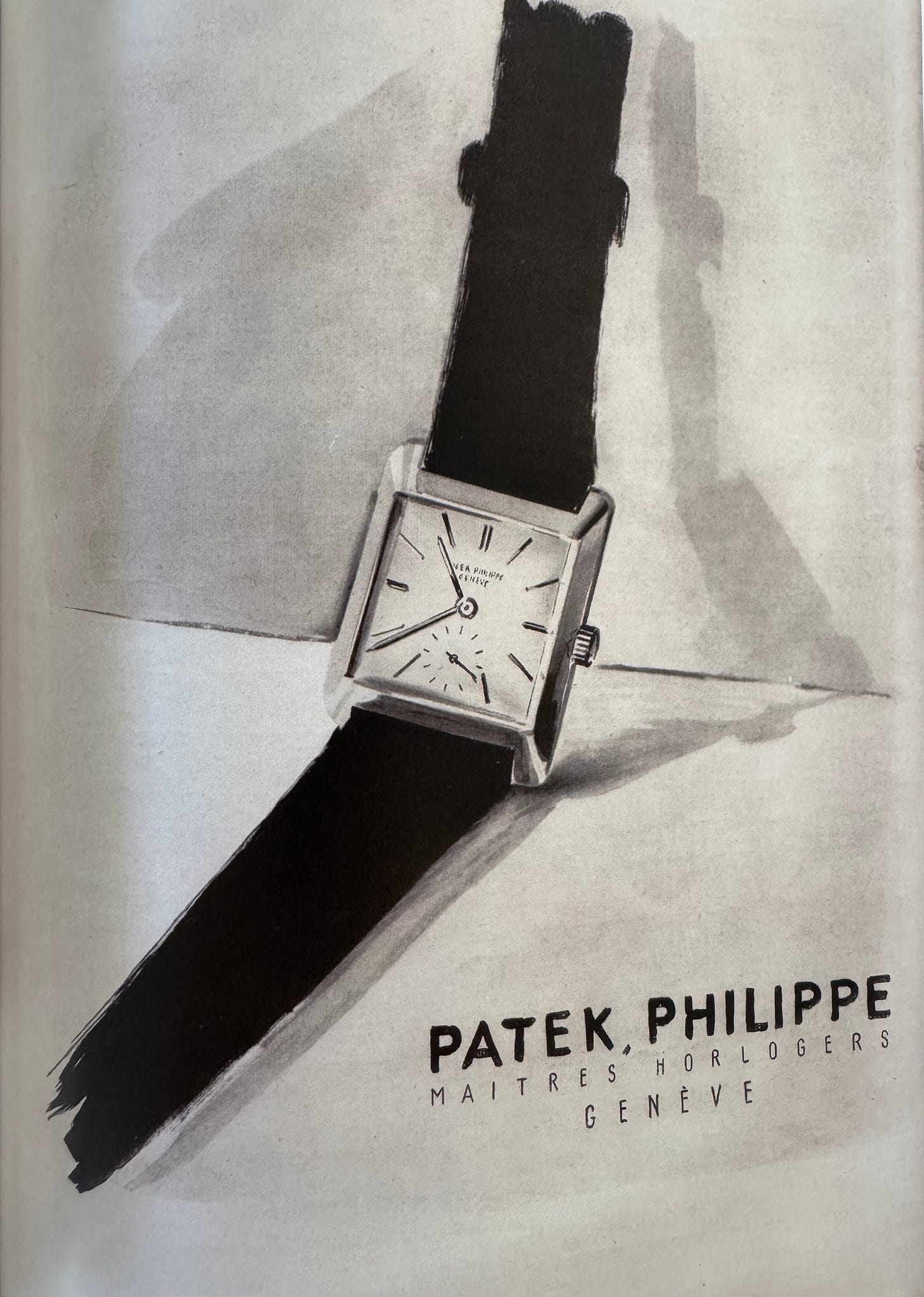
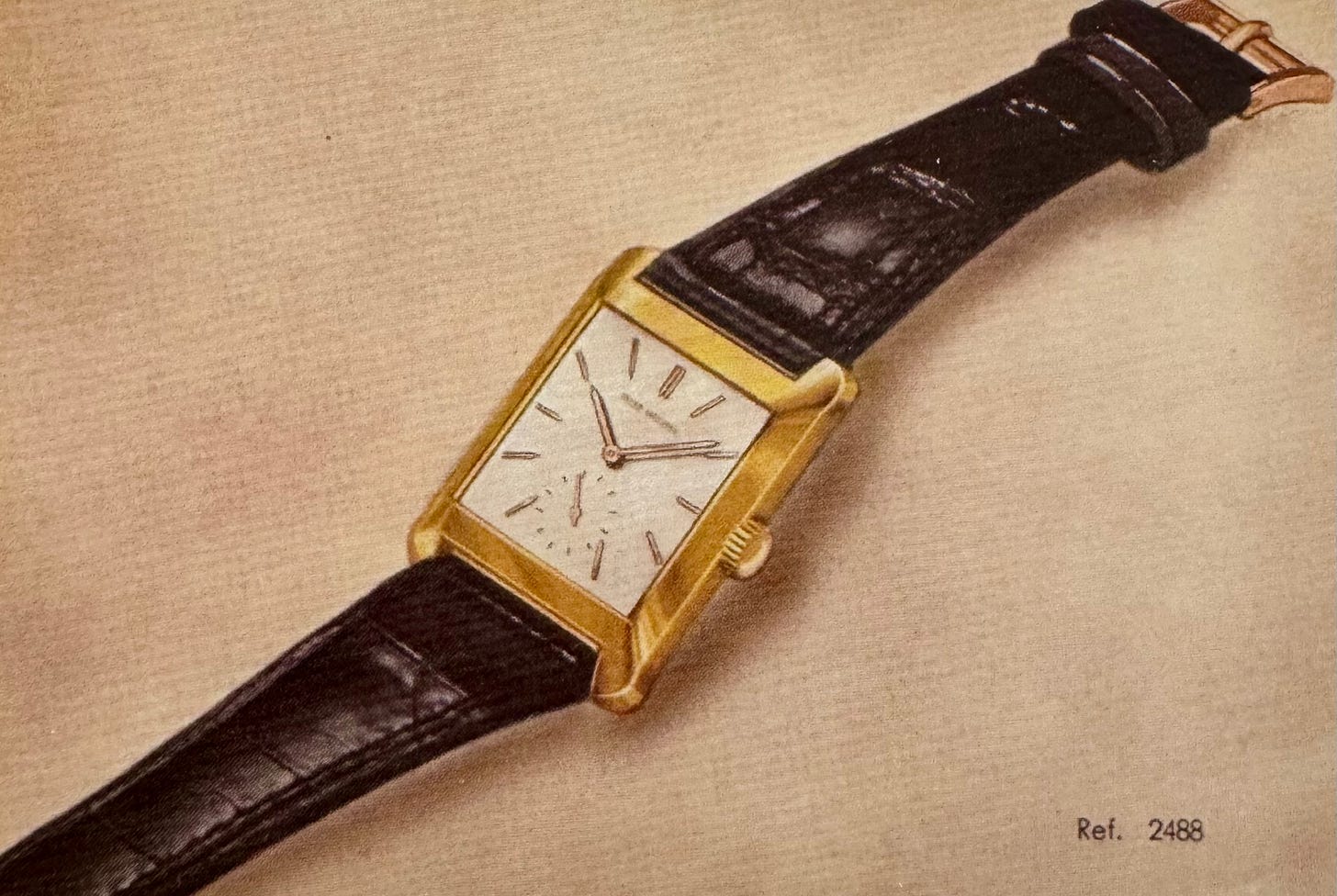
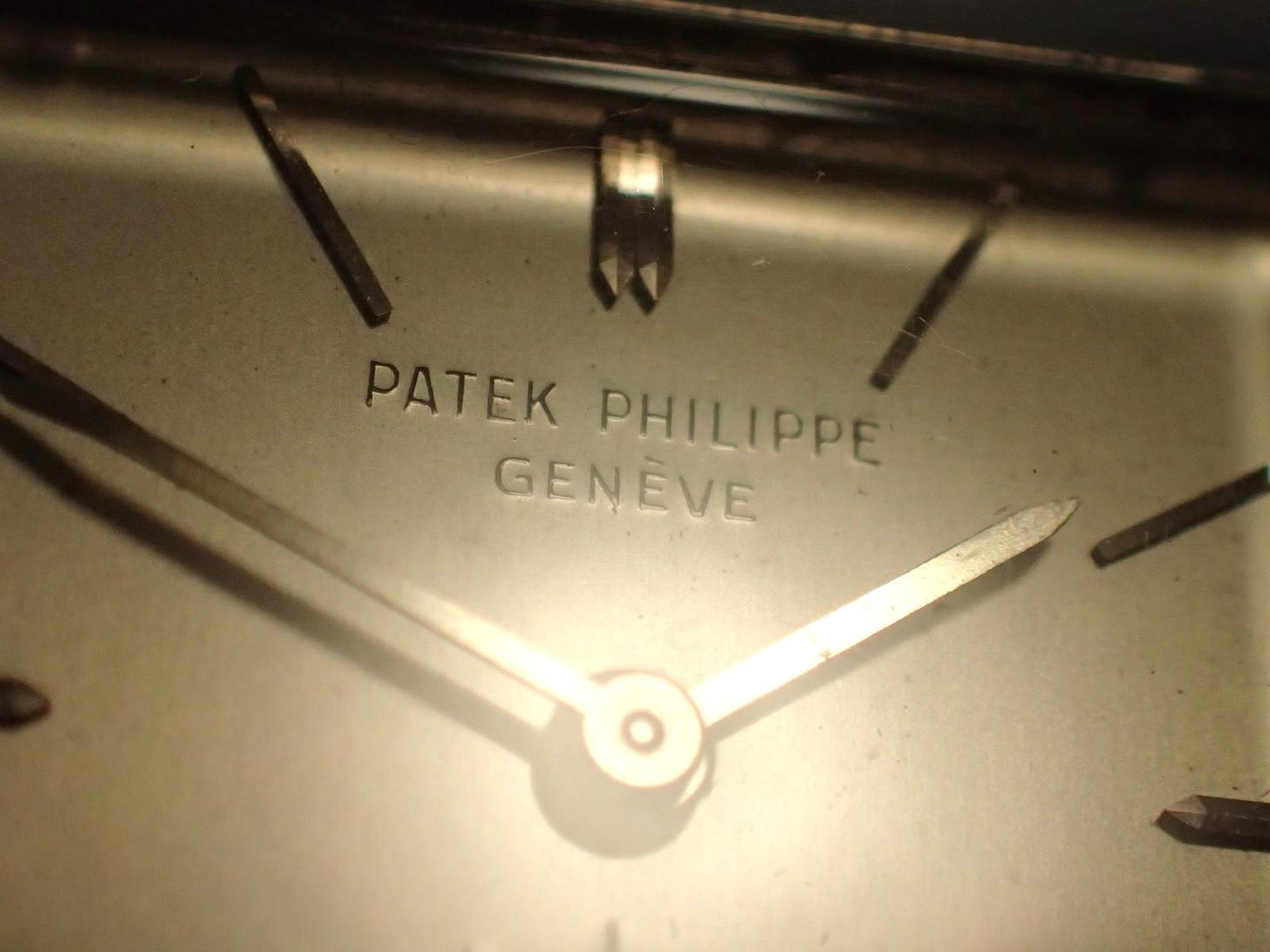
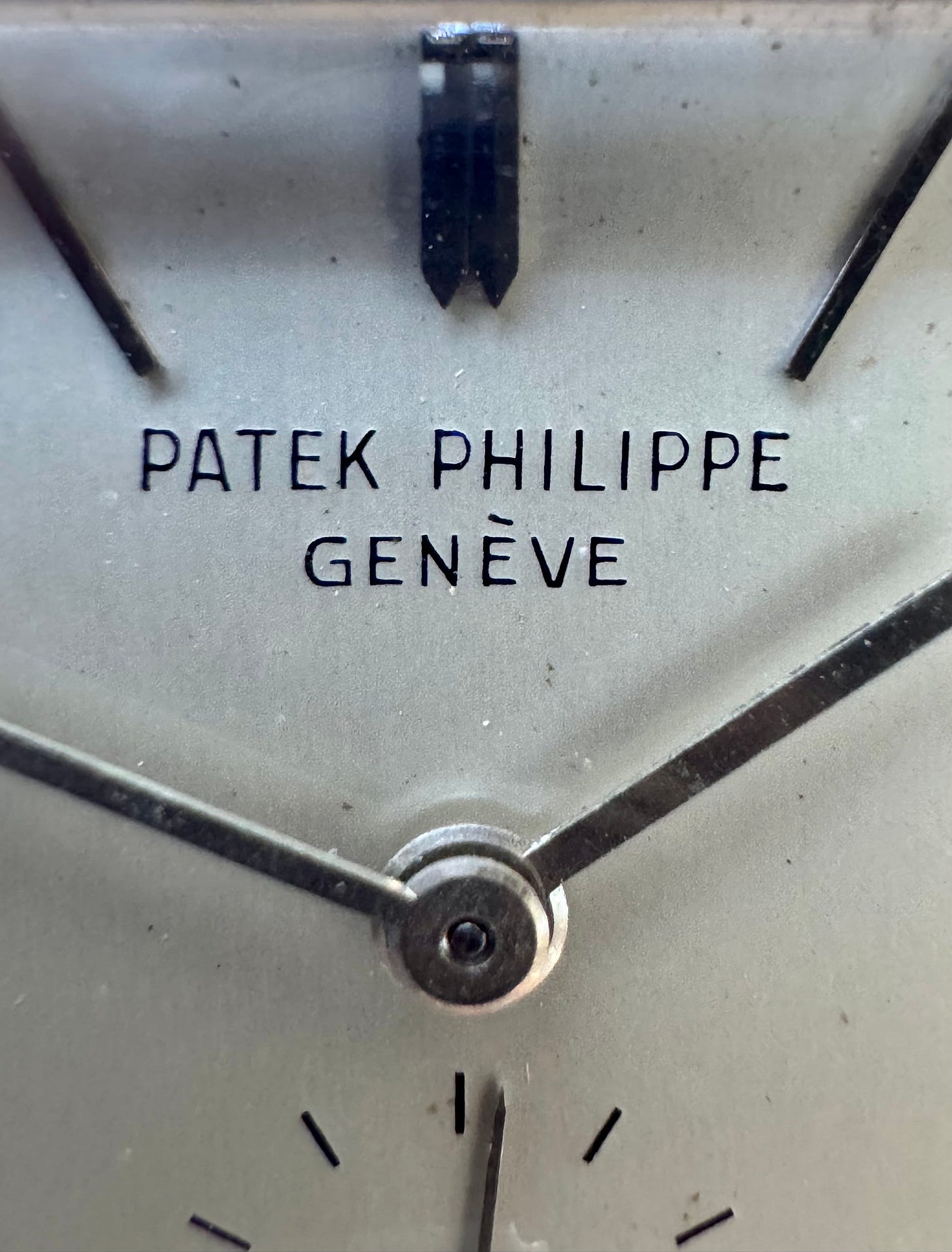
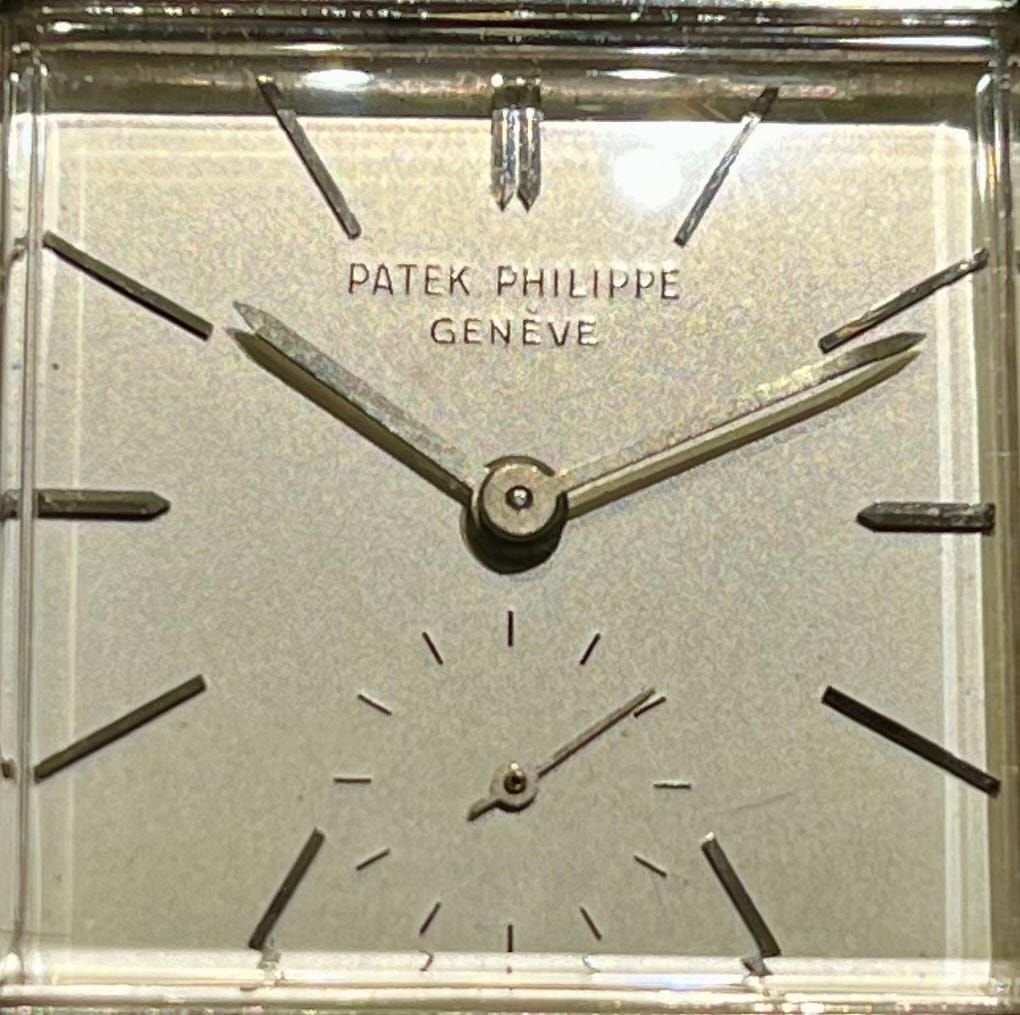
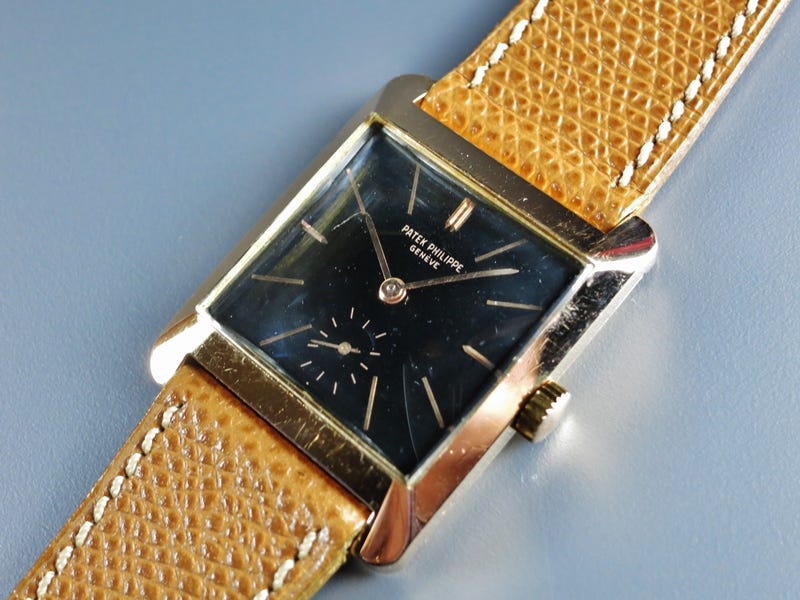


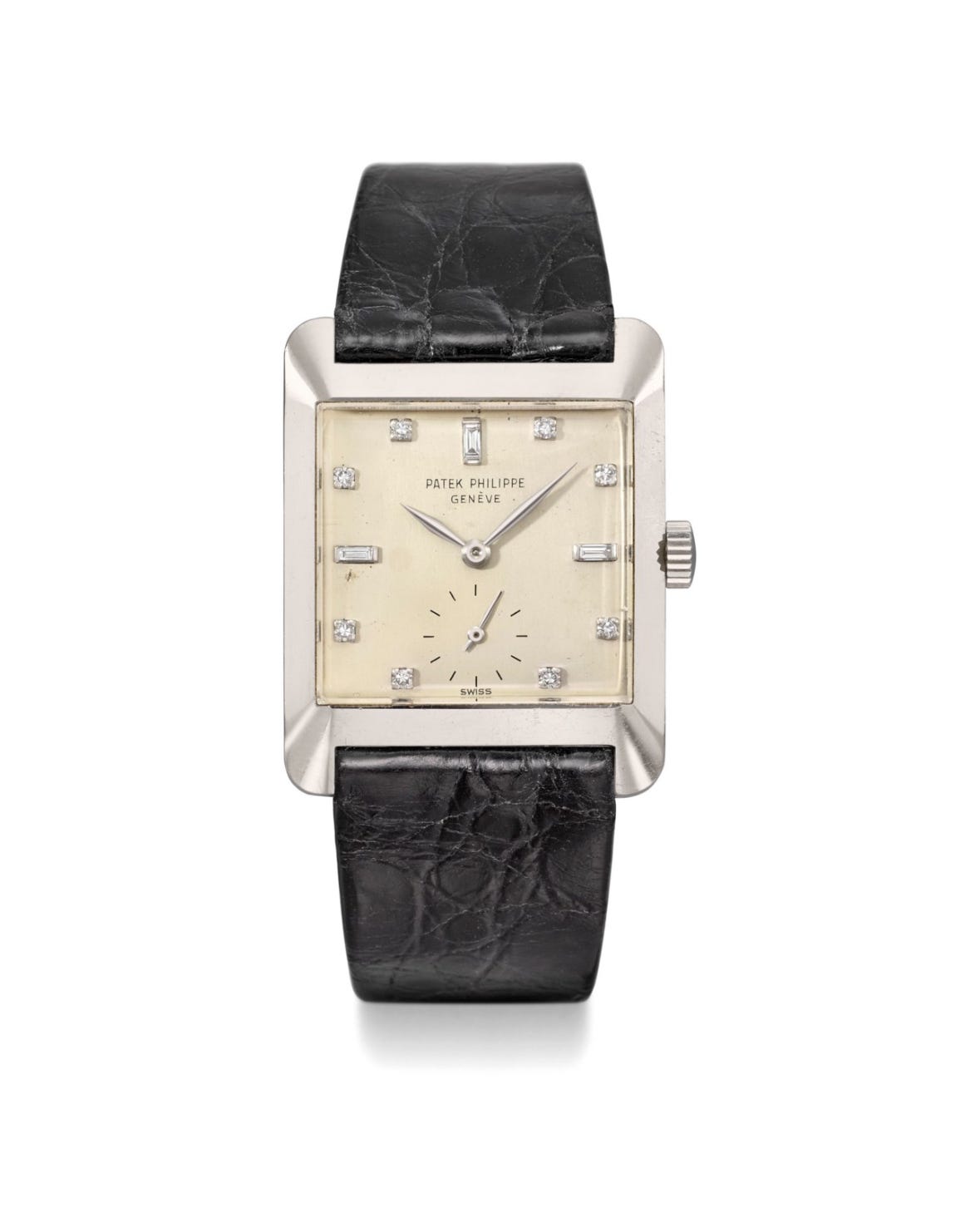
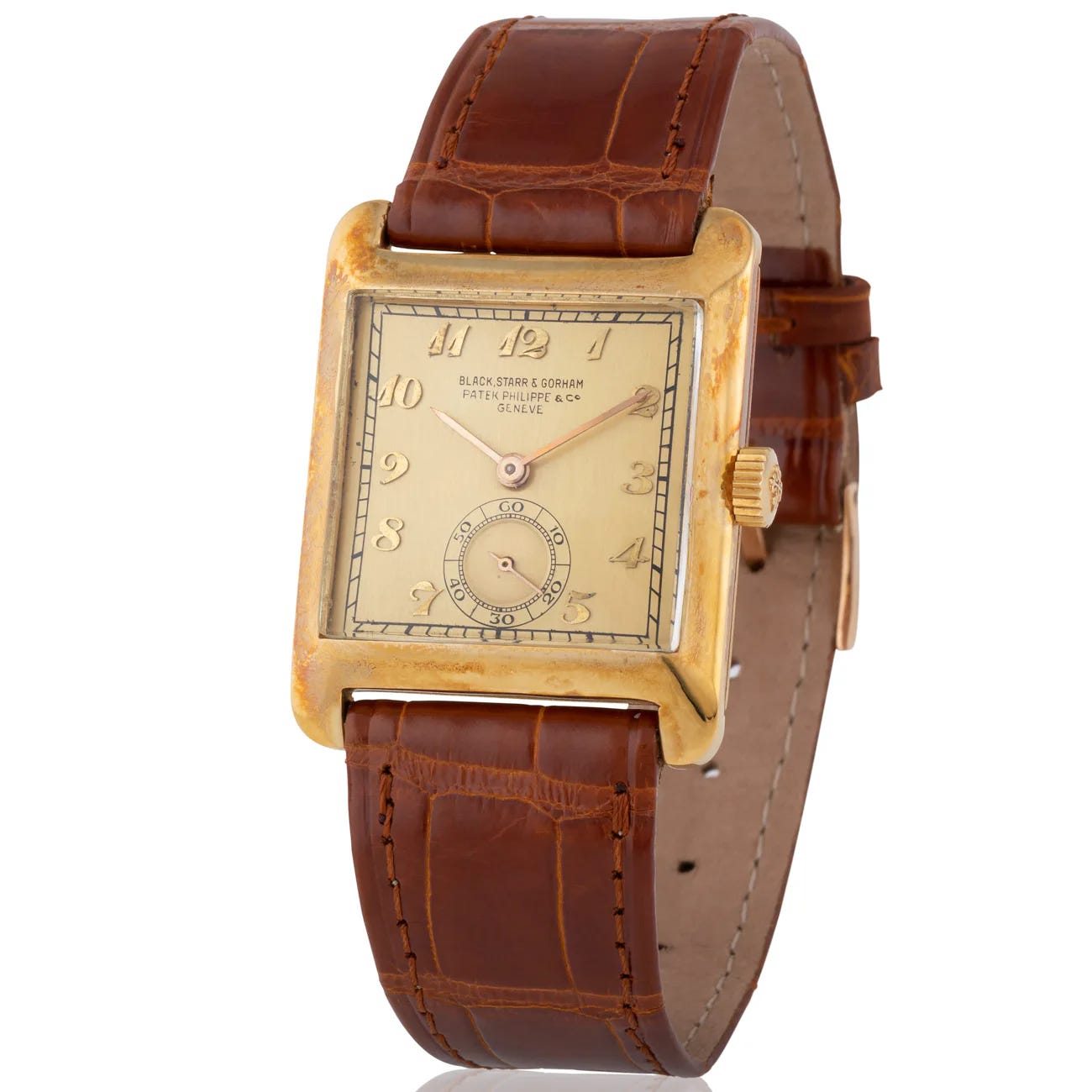
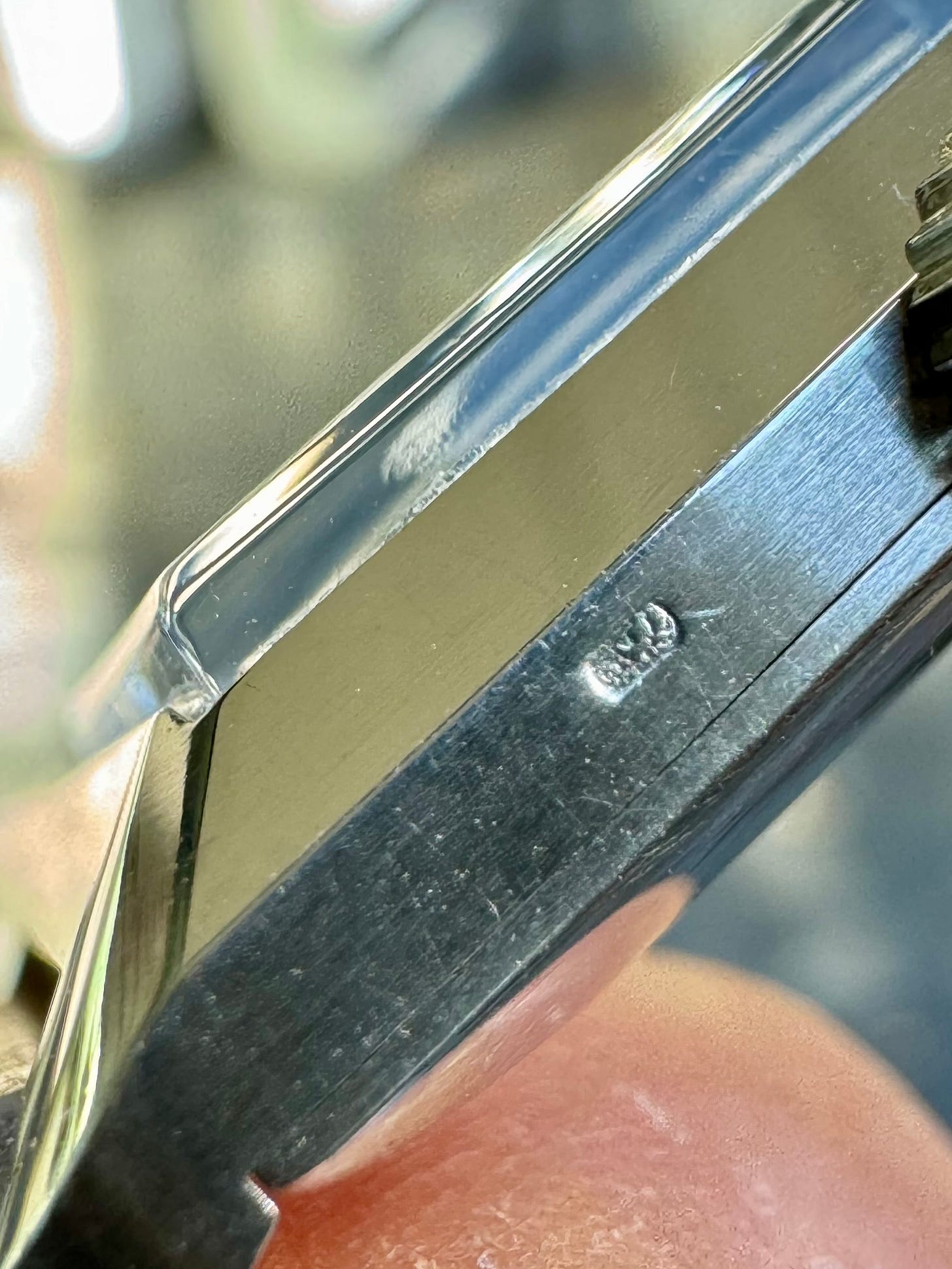
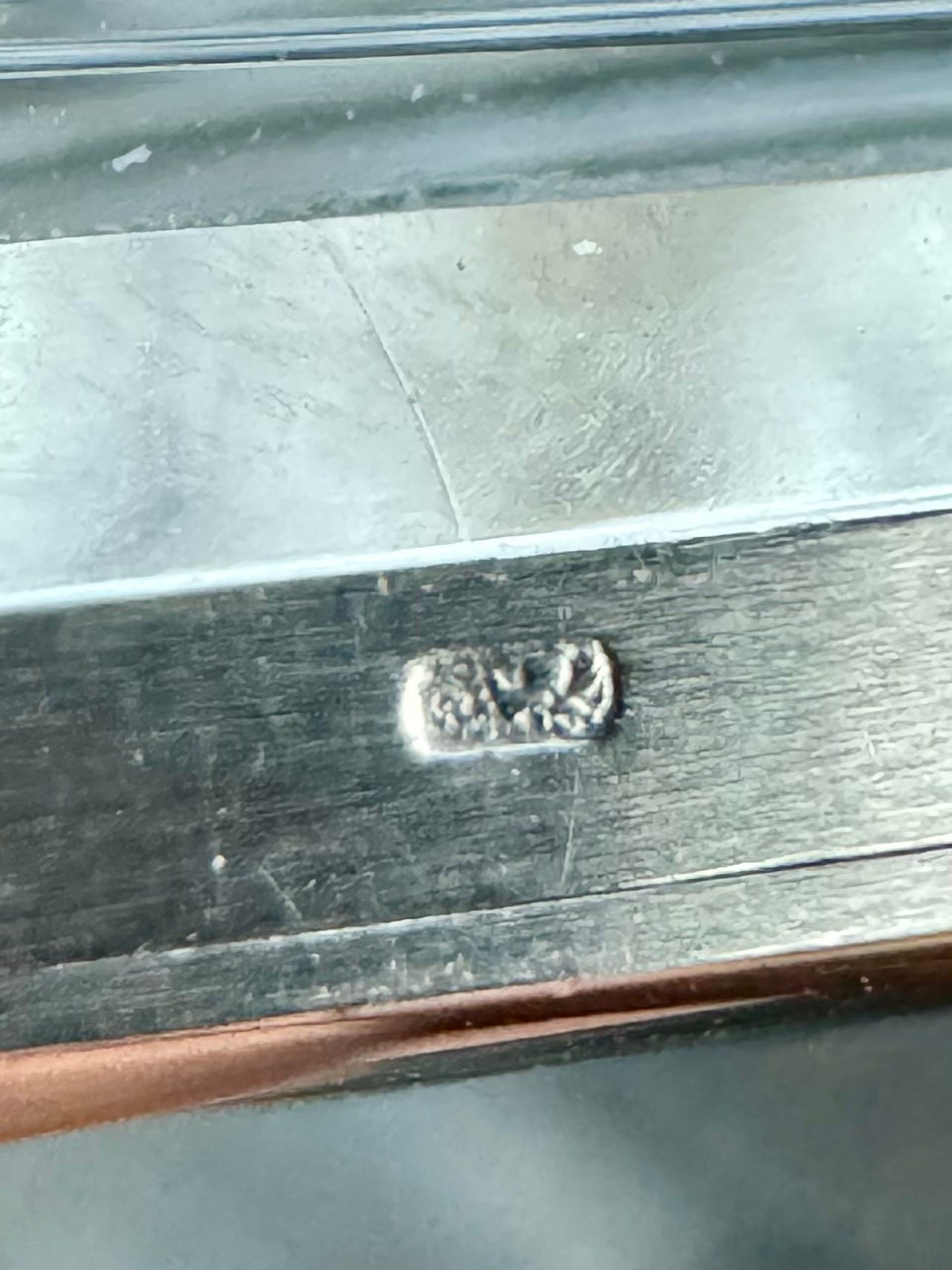
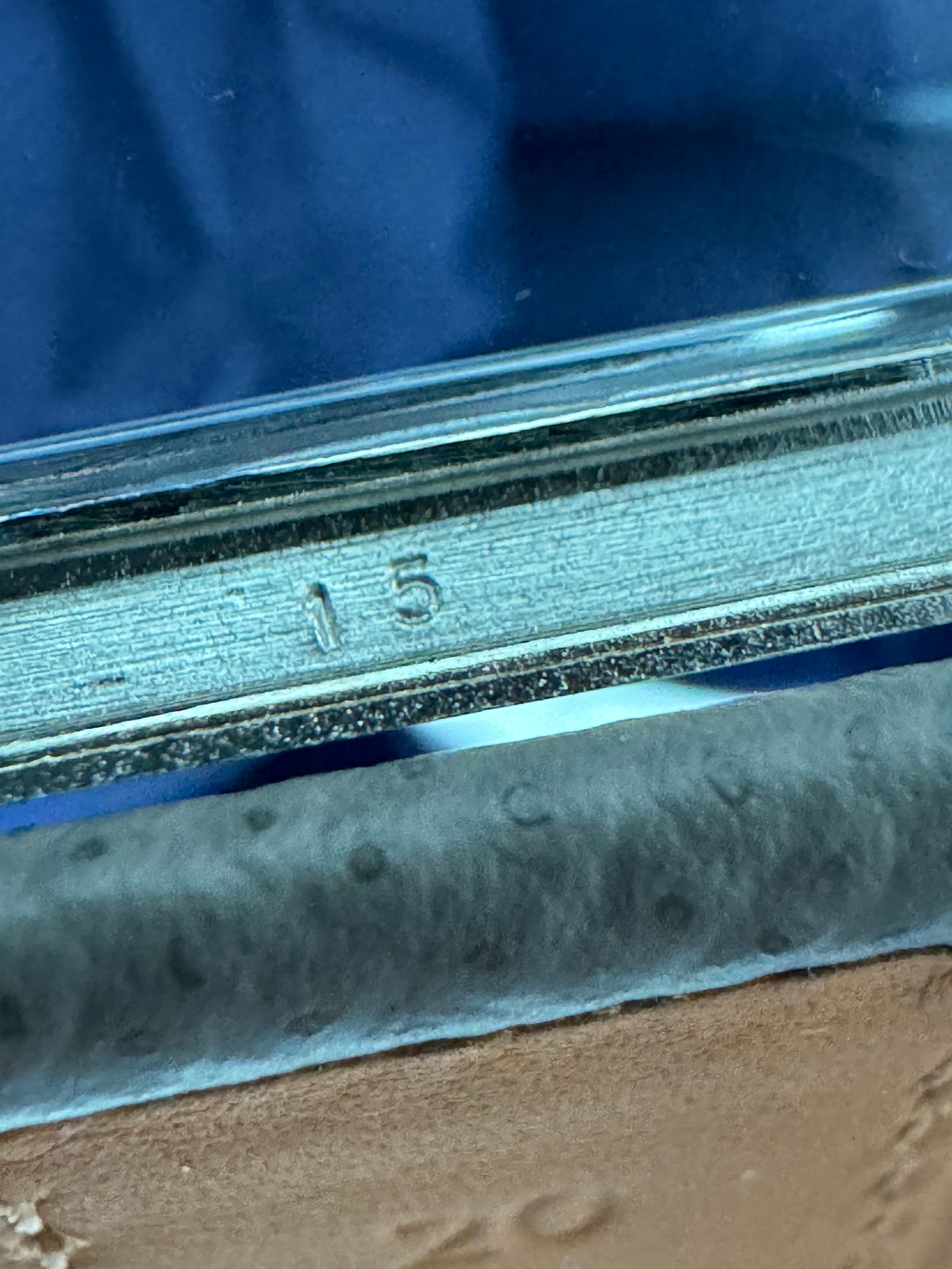
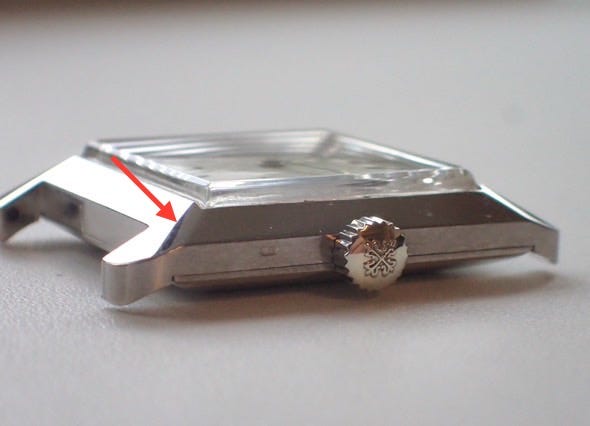
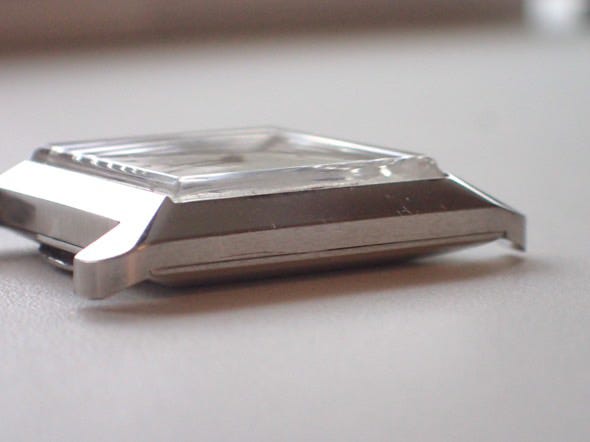
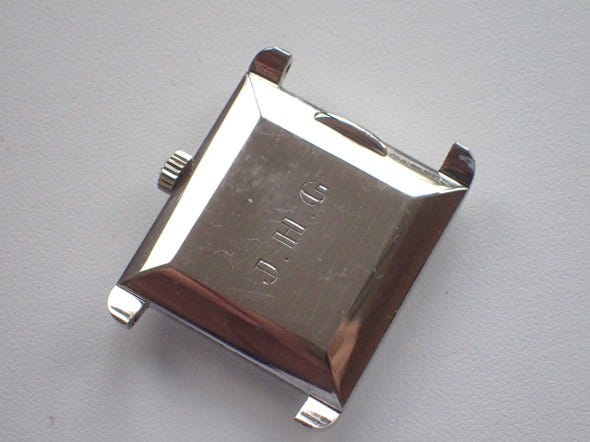
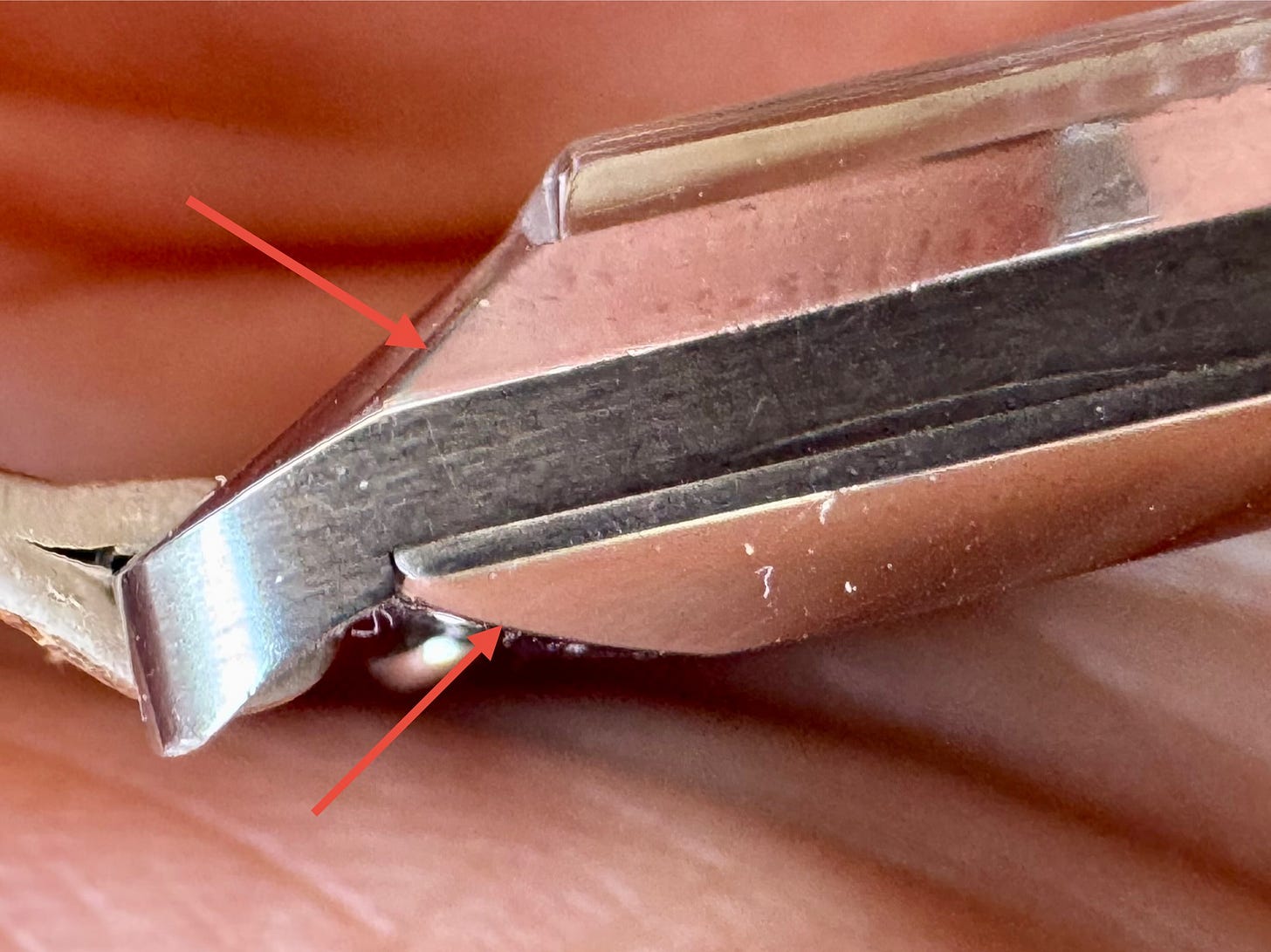
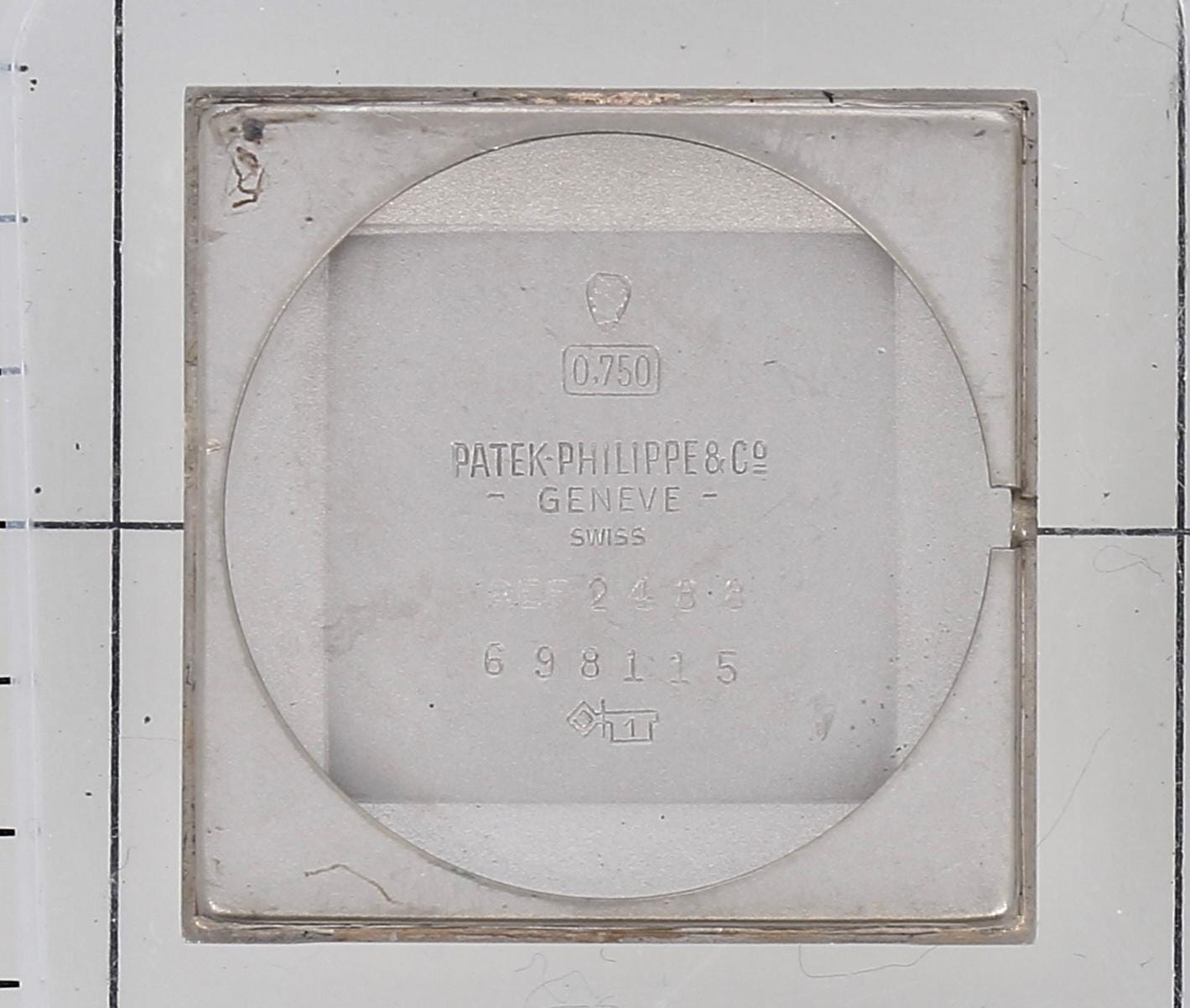
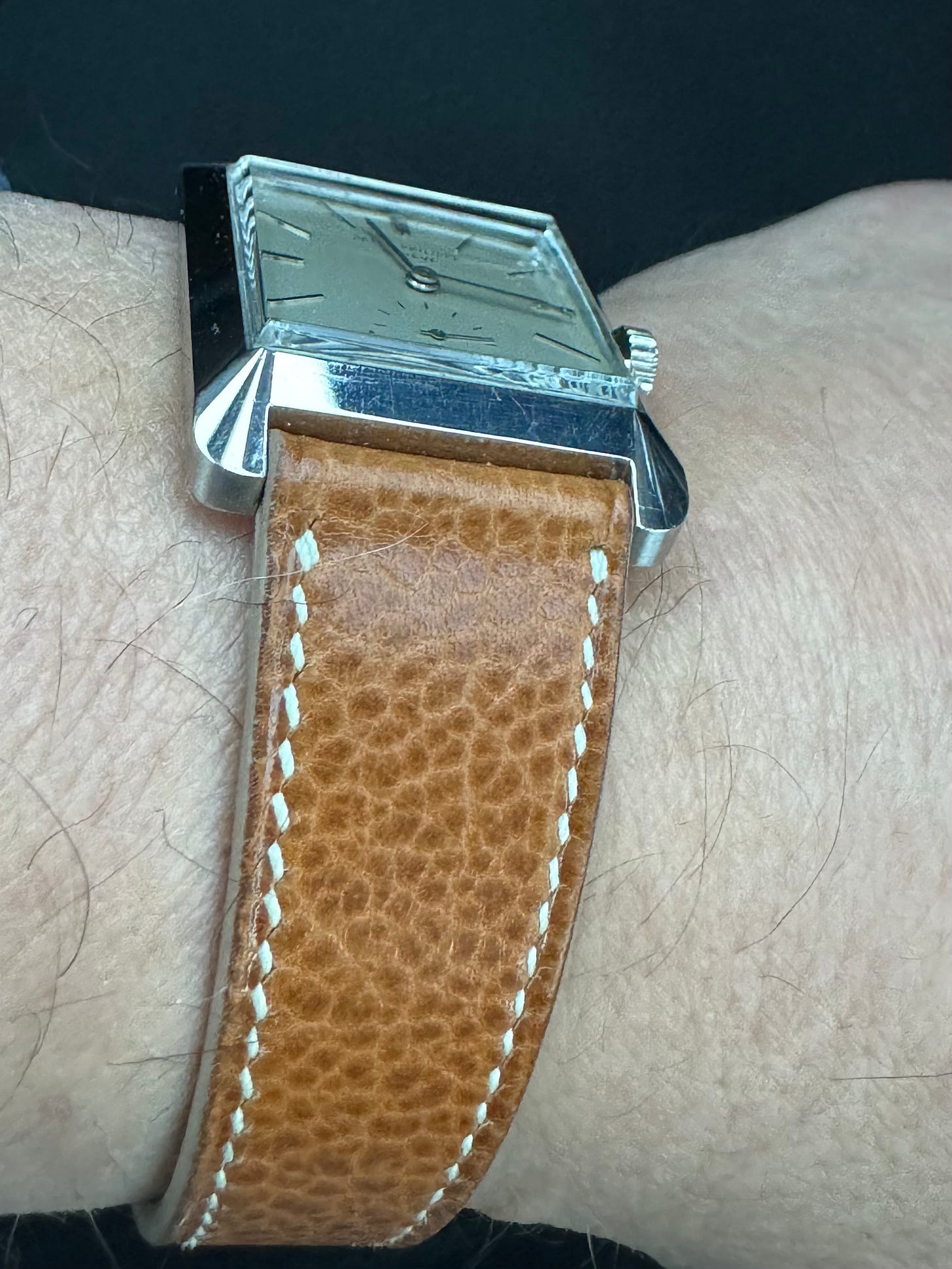
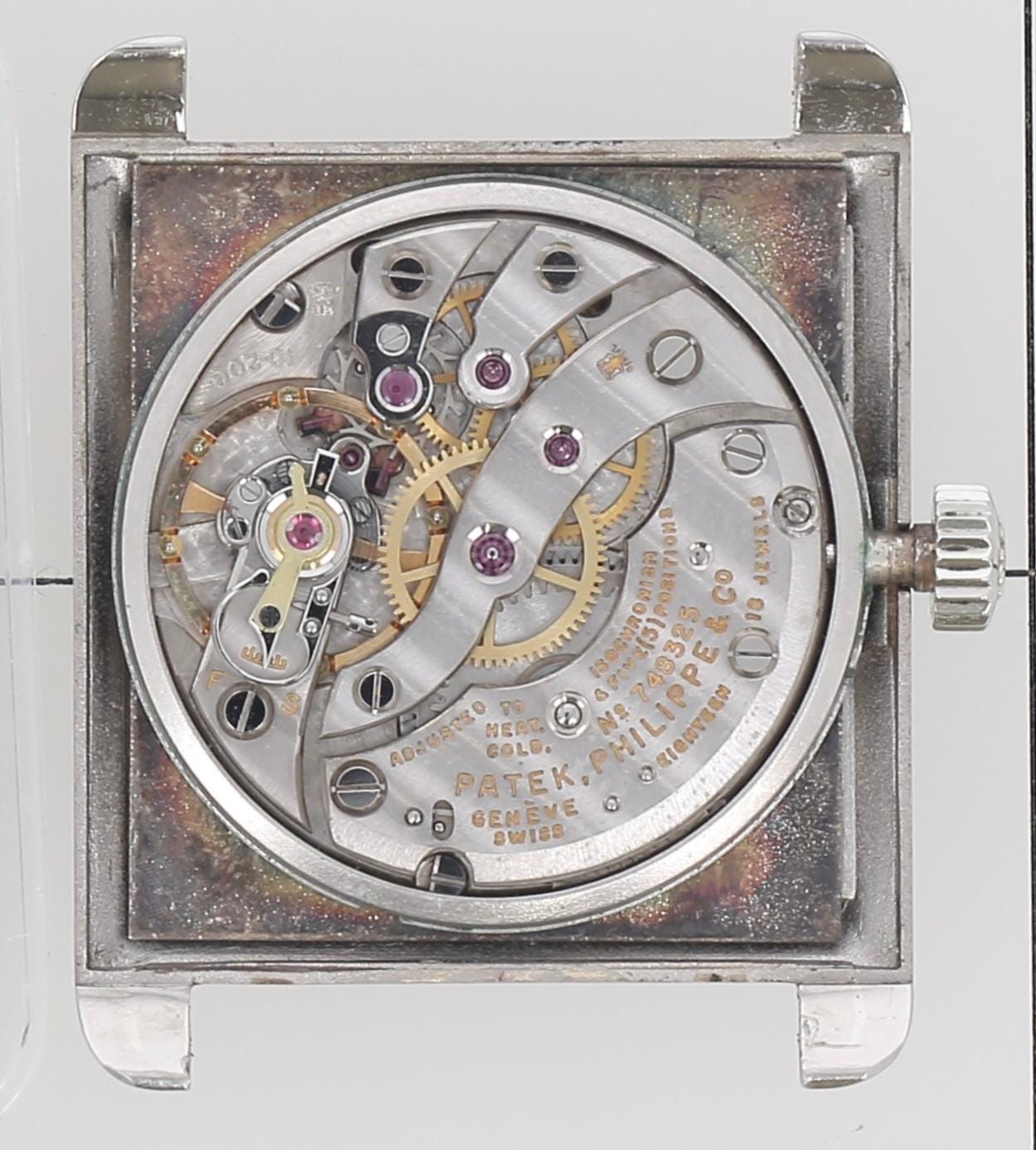
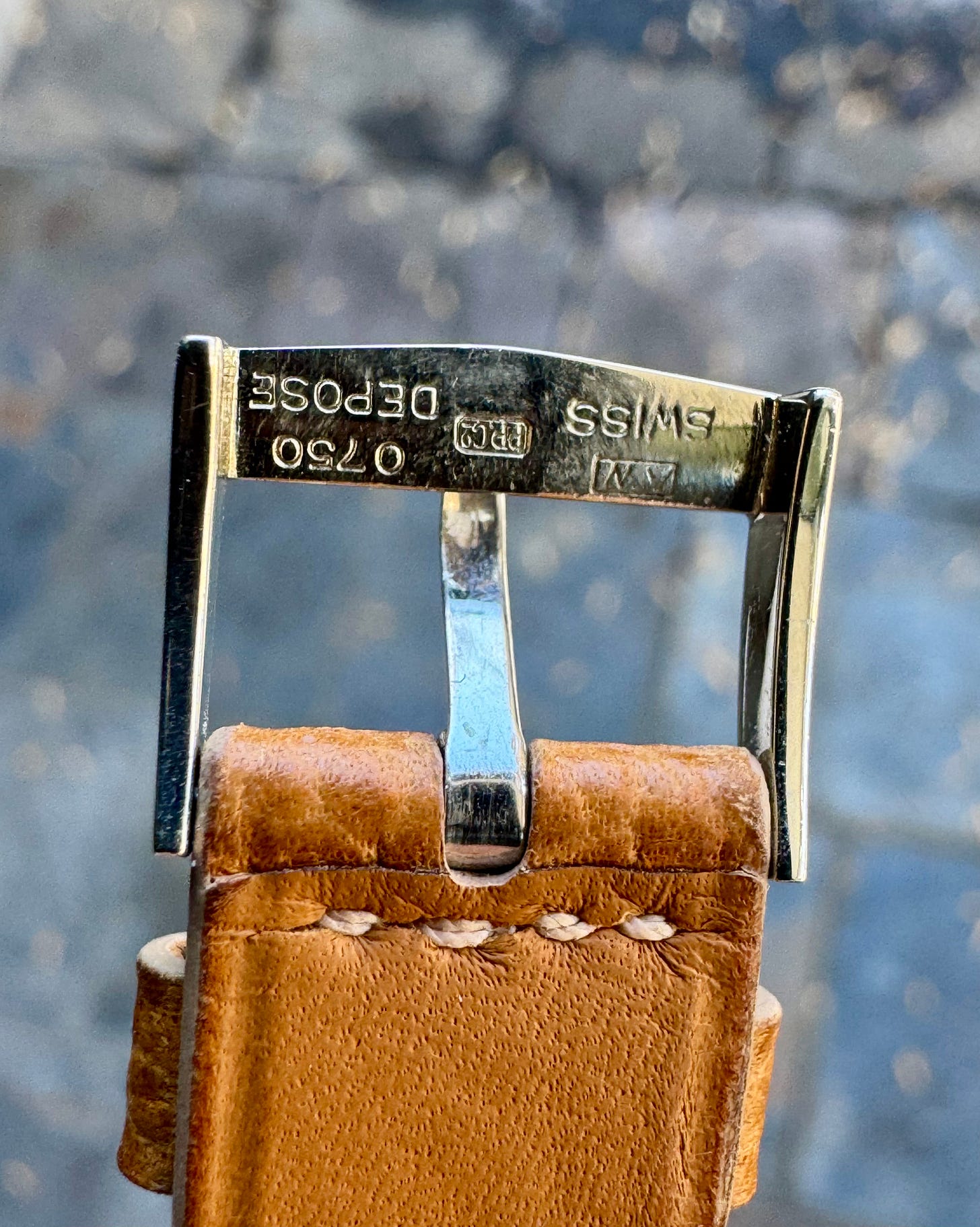
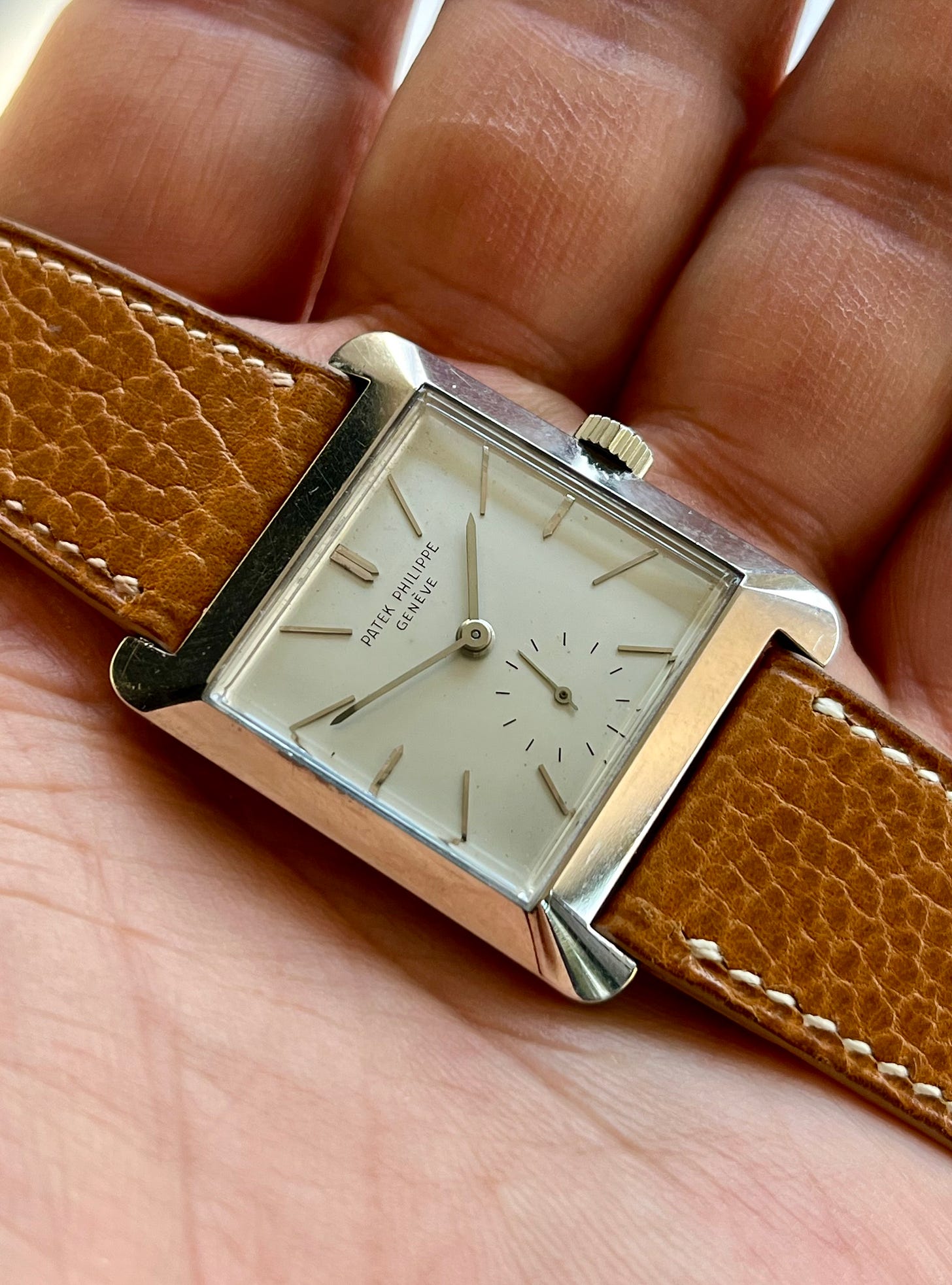
Very nice work. What sets this apart from its square brothers with different dials/cases from the 50s?